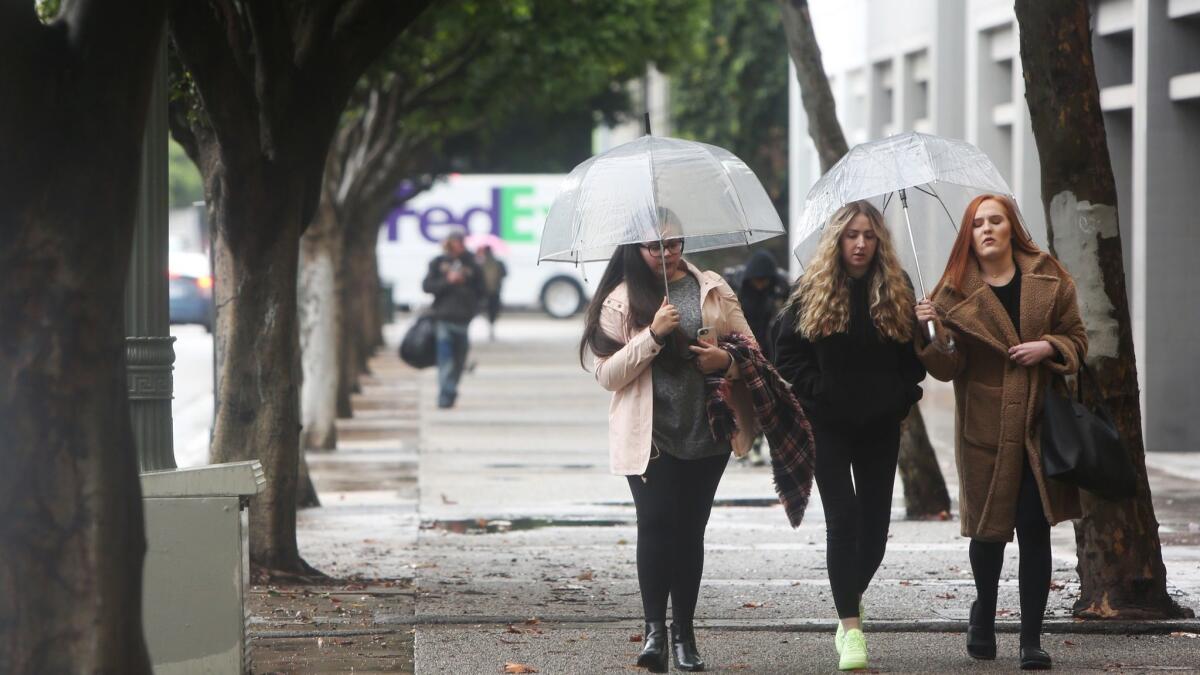Strong atmospheric river weakening as it heads toward Los Angeles, forecasters say

A powerful winter storm that has drenched Northern California and threatened to turn small communities into islands as raging rivers flood is beginning to weaken as it heads toward Los Angeles on Wednesday.
The atmospheric-river fueled storm had moved into San Luis Obispo and Santa Barbara counties by early Wednesday but wasn’t providing nearly the same drenching rain that it had dropped on the northern half of the state since Monday.
Forecasters expect the storm to be even weaker — resulting in just a smattering of rain — by the time it reaches Los Angeles by the afternoon. L.A. is expected to receive less than a quarter of an inch of precipitation, while the Central Coast could see up to an inch of rain through Thursday.
“It’s already weakened a lot and it’s supposed to continue to weaken as it moves south,” said Lisa Phillips, a meteorologist with the National Weather Service in Oxnard. “We’re just not expecting a lot of accumulation with this system.”
The opposite was true for communities in the northern part of the state, which received the brunt of the notoriously wet weather system.
Atmospheric rivers are long, narrow bands of water vapor that are pushed across the Pacific Ocean by gusty winds. When strong enough, they can account for a disproportionate amount of the annual precipitation — between 30% and 40% — on the West Coast, according to experts.
In 2016, a series of intense atmospheric rivers helped ease California’s epic drought by producing record rain and snow in Northern California. While the storms can be beneficial for water supply they also can create hazards like flooding and mudslides.
With this system, some communities in northern Sonoma County received nearly 2 feet of rain in two days. The relentless precipitation pushed the Russian River past its flood capacity overnight and sent water streaming into nearby communities, forcing thousands to evacuate.
A solid soaking might still be in the cards for Angelenos later in the week, when a second atmospheric river makes its way into the region. It is too early for forecasters to tell how much rain will accompany that system, but they predict it will probably be heavier over the southern portion of the state.
Twitter: @Hannahnfry
More to Read
Sign up for Essential California
The most important California stories and recommendations in your inbox every morning.
You may occasionally receive promotional content from the Los Angeles Times.











